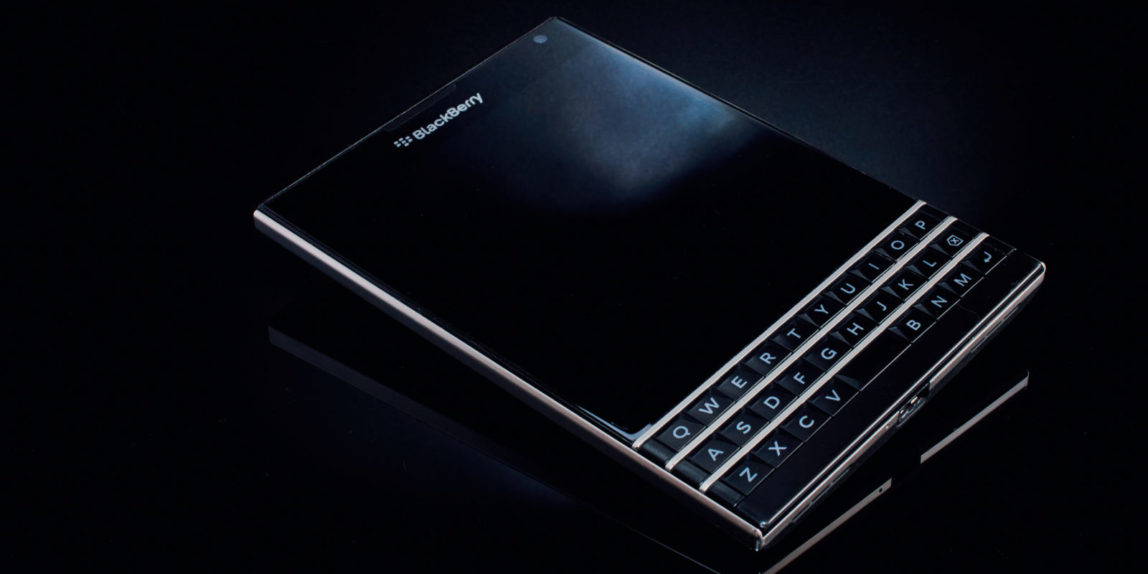Welcome to the BlackBerry Planet that keeps you connected to work, life and everything in between.
Blackberry is regarded as one of the worst weeds in Australia because of its invasiveness, potential for spread, and economic and environmental impacts. In the tech domain, the BlackBerry is a stylish way to get things done and keep you connected to work, life and everything in between. BlackBerry is a small device that connects the big Earth. Ofcourse, there’s the odd virus attack that threatens to take over your smartphone, but most of these threats are momentary. So don’t let that get you. And no, this is no sponsored post. Just my profile on the company that has slowly and surely made it to the top of the smartphone industry. Knowing how they work might make you good at your job, whatever that is.
The BlackBerry monopolises the world of work – nobody else comes close. An astounding 85 percent of public corporations are supplying staff with the devices, and more than 175,000 BlackBerry Enterprise Servers installed worldwide. The US Congress was RIM’s first big client, and Uncle Sam is still the biggest consumer of BlackBerrys. Today, more than 500,000 devices are installed in every department of the U.S. government and throughout the US Senate and House of Representatives.
The beginning
Big things come in small packages. When Steve Jobs first brought out the Apple Macintosh in 1984, Research In Motion (RIM) began life in Waterloo, Ontario, as a two-person tech start-up in a one-room office. The founders were 20-year-old college dropout Mike Lazaridis and friend Doug Fregin. Financed by family funds and a $15,000 government loan, RIM’s first big job was a $600,000 contract making networked LCD display screens for the General Motors Canada assembly line. Ten years later, Lazaridis received an Oscar for RIM’s Digisync Film Barcode Reader, a device that revolutionised Hollywood.
In the late 1980s, RIM aligned with AT&T, Rogers and Ericsson to build miniature radios and modems to let PCs send data and messages over mobile networks. In 1996, RIM came up with the Inter@ctive Pager 900, the world’s first pocket-sized, two-way pager. Two years later, it built its first BlackBerry, the 950, a wireless wonder that synchronised with a user’s desktop computer and corporate email. Since 1992, Lazaridis and co-CEO Jim Balsillie have been driving the RIM story.
And it shows. Statistics reveal that 85% of the Fortune 500 companies use BlackBerry. The Queen has a BlackBerry and US President Barack Obama’s struggles to keep his device in the White House gained him enormous sympathy. The super secure email device and web browser is today packed with applications and features that can do everything from online banking to opening your garage door. There are studies that tell us that BB use can boost employee productivity by more than 30%. The BlackBerry Prayer Position is something you will see wherever you go – in planes, trains, buses, boardrooms, parks and playgrounds. From the ground and up.
With such a loyal fan following, RIM has become a global technology powerhouse and one of the top three NASDAQ tech favourites, only behind Apple and Google. Says Mike Lazaridis of the continuing legacy of the BlackBerry to turn a vision of the future into reality: “When they go to work, people expect a phone, a desk, a chair, a light. And a BB has really taken on that status.”
Users love the ability to freeze or wipe data from a lost or stolen BB. What’s more, BB messaging is compressed, sometimes twenty times more than competing systems, so both companies and individuals save a bundle in bandwidth costs. What began as a way to wire thousands of employees in various companies has become a handy tool for every consumer. Today, more than 60% of them are outside the Enterprise platform, buying their services from telecom providers.
The phenomenal rise of the BB happened post 9/11. The only people trapped in the World Trade Center’s twin towers who were able to contact their loved ones after cell service failed were those with BlackBerrys. Police, fire-fighters, ambulance drivers and then US vice president Dick Cheney used their BlackBerry devices during the crisis. Today, Alaska governor Sarah Palin governs by her two BlackBerrys and says she feels “naked without them”.
We are increasingly wearing our brains outside our skulls. Take the BlackBerry Enterprise Solution. It spans over 95 wireless carriers across 40 countries. With RIM, form is function. As Lazaridis says, when anyone has a good idea, RIM patents it right away. Lazaridis is funding an institute of quantum physics in Canada for years. He is interested in marrying quantum physics with mobile devices. You could also call it techno-telepathy; technology that allows people to stay in such close touch, it’s almost like telepathy.
The recent Blackberry 9000 series works on the Intel Xscale 624MHz CPU. The earlier version of Blackberry cell phones worked with an 80MHz processor and were hence comparatively slower in downloading 3G web pages. Blackberry uses an IPD file for its data storage. A single IPD is used for the database handling, which makes the performance even faster. What also makes Blackberry different from the conventional cell phones are the Blackberry APIs that are available for writing programs by any individual. You can use these APIs and write your own software. There are various other softwares that are compatible to the Blackberry technology. Blackberry Internet Service, Blackberry Desktop Redirector and Blackberry Messenger are a few of them. Various third party softwares are available, for free download over the Internet, which makes the use of these PDAs even more fun.
In January 2010, BlackBerry showcased a Presenter device, about the size of a mints container, that is plugged into a projector and then controlled wirelessly by a BlackBerry. Which means, if you do PowerPoint presentations, you can leave the laptop behind. Slides, graphs or other information assembled using Microsoft’s PowerPoint program are routed to a projector and displayed in high resolution. The presentation streams securely over Bluetooth. You can walk around while doing your presentation; read notes on the handset and freeze or jump around the slides.
BlackBerry Alliance program of partners work under contract with Research In Motion to create new BlackBerry applications. Typical applications include digital dictation, GPS tracking, CRM and expense management. On October 6, 2009, BlackBerry Messenger 5.0 was officially released, adding a completely new set of features, including bar code scanning to add contacts, profiles, sharing your location via GPS, and creating groups.
RIM maintains their lead in the Enterprise business because they are they have end-to-end encryption, something that Apple doesn’t offer. While that might not be important to smaller business, it is extremely important to the larger customers that make up the bulk of RIM’s business. The Apple’s battery life, error rate with the typing, inability to work off line (while flying for instance) have all reduced productivity enormously. No wonder, large marketing companies in the UK have stopped their staff from having iPhone because of the enormous bills accumulated when outside the UK. The data compression used by RIM results in a much lower data charge than the iPhone. Lazaridis has stated that three BlackBerry handsets can operate for every one of their competitors. That’s a cost savings that will allow RIM to maintain their leadership in this space.
Agreed, Apple has made a brilliant UI for their smartphone, but in the technical aspects, they are still behind. Even the upcoming OS 4 doesn’t match what RIM has had for years as maintaining the balance between functionality and battery life is still a problem for Apple. BlackBerrys, however, espe
cially the Bold 9700, use batteries that will continue to allow you to surf the internet, make calls and send and receive emails for several days. The removable battery also means a spare can be carried and put to use if needed. The BlackBerry can handle anything that you would normally do from Outlook on your Exchange server, and it is a perfect desktop extension. No wonder, the BlackBerry is the most secure device in the world for business use.
So how is the BlackBerry looking these days? For starters, the BlackBerry OS 6.0 boasts of an improved Web Kit-based browser, a customisable homescreen, a revamped media player and a more intuitive user experience. And this extends to both trackpad and touchscreen devices. Not to mention, an assortment of new apps and a free version of BlackBerry Enterprise Server Express that will greatly reduce the cost for small businesses.
With a sales record of more than 50 million BlackBerrys by the year 2009, the annual profits of Research In Motion stands at more than $11 million. The time is not far when RIM will come up with a new device that can take on the Droid, iPhone, the Palm Pre and the host of new smartphones cropping up. It could be a device targeted at consumers, that would integrate with the company’s app store and put the BlackBerry on equal footing with its rivals.
PHONES DOWN THE YEARS
* Early Pager Models: 850, 857, 950, 957
* Monochrome Java-based Models: 5000-series and 6000-series
* First Colour Models: 7200-series, 7500-series and 7700-series
* First SureType Phone Models: 7100-series
* Modern BlackBerry Models (2006–2008): 8000-8830-series including: BlackBerry 8800, BlackBerry Pearl, Pearl Flip and BlackBerry Curve
* Latest BlackBerry Models (2008–2009): 8900+ GPS Wi-Fi Series: BlackBerry Bold (9000), BlackBerry Curve 8900, BlackBerry Tour (9630), BlackBerry Storm (9500/9530)
* BlackBerry Storm 2 (9520/9550) (2009): BlackBerry Storm2
* BlackBerry Bold Series (2009): BlackBerry Bold 9700 (9700)
* BlackBerry Bold Series (2010): BlackBerry Bold 9650 (9650)
* BlackBerry Pearl Series (2010): BlackBerry Pearl 3G 9100/9105 (9100/9105)

